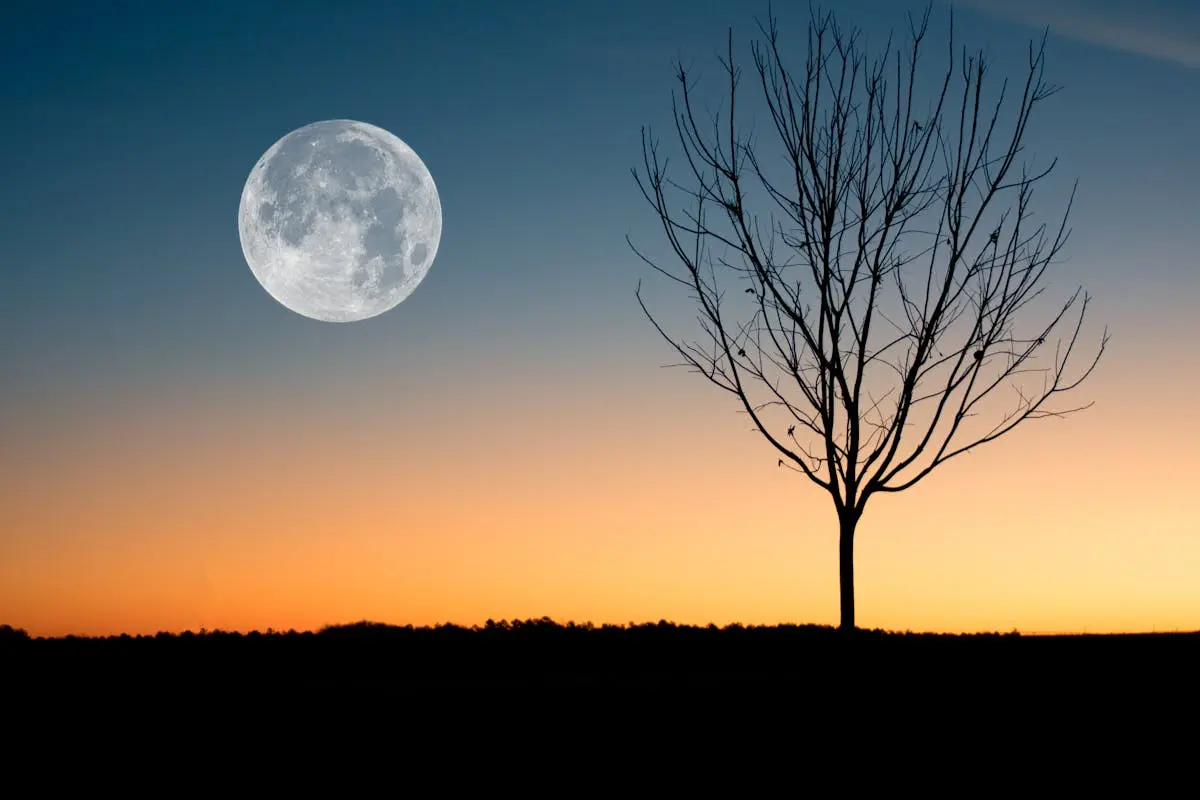
The Moon has always fascinated us, lighting our nights and guiding us through history. It’s a constant companion in the sky, but how much do we know about it? Here are 13 interesting facts about the Moon that will make you appreciate this celestial body even more.
13 Interesting Facts About the Moon
The Formation of the Moon
The Giant Impact Hypothesis
The most commonly accepted facts about the Moon’s development is called the Giant Impact Hypothesis. This theory advises that about 4.5 billion years ago, a Mars-sized body hit the first Earth. The debris from this massive collision eventually came together to form the Moon.
Other Theories
There are other theories about how the Moon might have formed. Some scientists believe it could have been created from a primordial disk of dust and gas that surrounded the young Earth. Others think the Moon might have been captured by Earth’s gravity as it passed by.
The Moon’s Surface
Maria and Highlands
The Moon’s surface is covered with vast plains called maria and rugged highlands. The maria are dark, flat areas formed by ancient volcanic eruptions. In contrast, the highlands are lighter in color and covered with craters.
Craters and Mountains
The Moon’s surface is dotted with craters, formed by impacts from meteoroids, asteroids, and comets. Some craters are enormous, like the South Pole-Aitken Basin, one of the largest impact craters in the solar system. The Moon also has mountain ranges, such as the lunar Apennines, which are similar in height to the Alps on Earth.
The Moon’s Phases
New Moon
The New Moon is the start of the Moon’s phases. During this phase, the Moon is between Earth and the Sun, making it invisible from Earth.
Full Moon
The Full Moon happens about 14 days after the New Moon. This is when the entire face of the Moon is illuminated by the Sun, making it appear as a bright, round disk in the night sky.
Other Phases
Between the New Moon and Full Moon, the Moon goes through several other phases, including the Waxing Crescent, First Quarter, Waxing Gibbous, Waning Gibbous, Last Quarter, and Waning Crescent.
The Moon’s Orbit
Synchronous Rotation
The Moon orbits Earth in a way that always shows the same face to us, known as synchronous rotation. This happens because its orbital period matches its rotational period, a result of tidal locking.
Eclipses
Lunar eclipses occur when Earth comes between the Sun and the Moon, casting a shadow on the Moon. Solar eclipses occur when the Moon passes between the Sun and Earth, for the moment blocking the Sun’s brightness.
The Far Side of the Moon
Why We Never See It
We never understand the far side of the Moon from Earth due to its synchronous revolution. This far side, often mistakenly called the “dark side,” receives as much sunlight as the near side.
Exploration of the Far Side
The far side of the Moon was mainly photographed by the Soviet Luna 3 ship in 1959. More recently, China’s Chang’e 4 mission landed a rover there, providing new insights into this unexplored region.
The Moon’s Influence on Earth
Tides
The Moon’s gravitational pull affects Earth’s tides. It causes the oceans to bulge out on the side closest to the Moon and the side farthest from it, creating high and low tides.
Biological Rhythms
Many marine species rely on lunar cycles for spawning. Additionally, the Moon’s phases have been linked to animal behavior, migration patterns, and even human sleep cycles.
The Moon in Human Culture
Mythology and Folklore
The Moon has been a central figure in mythology and folklore worldwide. Ancient cultures often worshipped it as a deity, and it features prominently in myths from Greece, Egypt, China, and Native American traditions.
The Moon in Modern Culture
In modern times, the Moon continues to inspire art, literature, music, and cinema. From classic novels like “The Moonstone” to movies like “2001: A Space Odyssey,” its influence is undeniable.
Human Exploration of the Moon
Apollo Missions
NASA’s Apollo missions were the first and only times humans have set foot on the Moon. Between 1969 and 1972, twelve astronauts walked on its surface, conducting experiments and collecting samples.
Future Missions
Future missions to the Moon aim to establish a permanent human presence. NASA’s Artemis program plans to return humans to the Moon by 2025, including the first woman and the next man.
The Moon’s Resources
Helium-3
The Moon holds valuable resources like Helium-3, a potential fuel for nuclear fusion. Harvesting Helium-3 could provide a nearly limitless energy source for Earth.
Water Ice
Recent discoveries of water ice in permanently shadowed lunar craters open possibilities for future lunar colonies. Water is essential for life and can be split into hydrogen and oxygen for rocket fuel.
Interesting Lunar Facts About the Moon
The Moon’s Temperature
Lunar temperatures vary drastically, from -173°C (-280°F) at night to 127°C (260°F) during the day. This is because the Moon lacks an atmosphere that is conducive to moderate temperatures.
The Moon’s Gravity
This lower gravity affects everything from walking to jumping, as famously demonstrated by astronauts’ bouncy movements during the Apollo missions.
The Moon and Technology
Moon-based Telescopes
Telescopes on the Moon could revolutionize astronomy. The Moon’s lack of atmosphere means clearer images of space, and its far side provides a perfect spot for radio telescopes free from Earth’s radio noise.
Lunar Rovers
Like those used in the Apollo missions and China’s Yutu rovers, Lunar rovers have been essential for exploring the Moon’s surface, helping scientists understand its geology and environment.
The Moon’s Mysteries
Lunar Anomalies
Lunar anomalies, such as transient lunar phenomena (TLP), are mysterious flashes of light or color changes observed on the Moon’s surface. Scientists are still investigating the causes of these phenomena.
Unexplained Phenomena
Other unexplained phenomena include unusual rock formations and magnetic anomalies. These mysteries keep the Moon an exciting subject for ongoing research and exploration.
The Future of the Moon
Colonization Plans
Plans for colonizing the Moon are becoming more concrete. Various space agencies and private companies are developing technologies to build habitats, extract resources, and create sustainable living conditions on the Moon.
Space Tourism
Space tourism companies are eyeing the Moon as a future destination. Imagine vacations to the lunar surface, experiencing low gravity, and witnessing Earthrise firsthand.
Conclusion
The Moon, our constant companion in the night sky, is much more than a celestial body. From its formation and phases to its cultural significance and future potential, the facts about the Moon continue to captivate and intrigue us. As we look to the future, the Moon promises to play a pivotal role in humanity’s journey into space.








I was suggested this web site by my cousin Im not sure whether this post is written by him as no one else know such detailed about my trouble You are incredible Thanks
I loved as much as you will receive carried out right here The sketch is tasteful your authored subject matter stylish nonetheless you command get got an edginess over that you wish be delivering the following unwell unquestionably come further formerly again as exactly the same nearly very often inside case you shield this hike